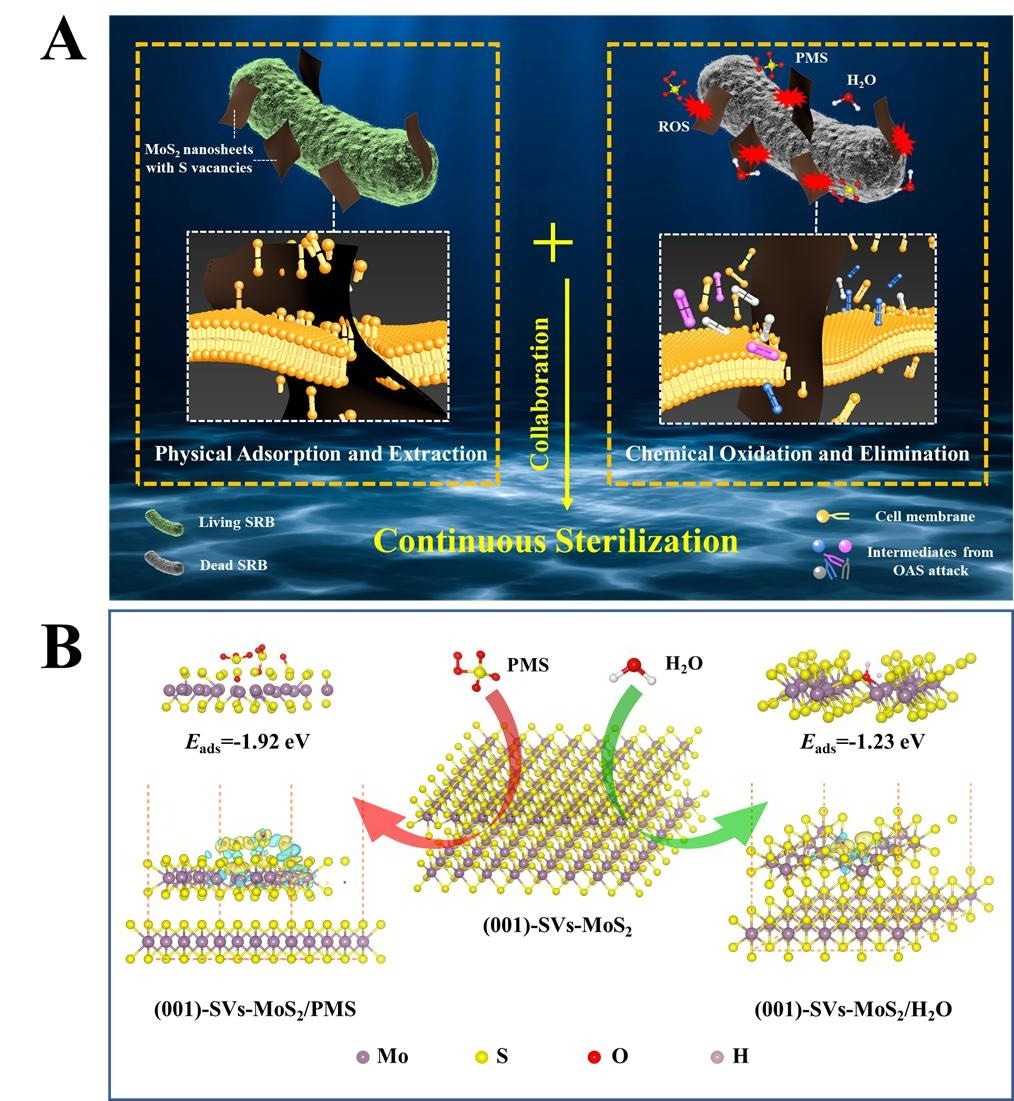Sulfate-Reducing Bacteria (SRB), an anaerobic bacteria, has long been thought to be the primary factor in metal material corrosion failure.

Schematic illustration of the continuous anaerobic bactericidal mechanism via physical extraction and chemical oxidation; (B) PMS and H2O adsorption on (001) surface of SVs-MoS2. Image Credit: Institute of Oceanology of the Chinese Academy of Sciences
Nanozyme was frequently employed in earlier research as an antibacterial substance. Nanozyme cannot be used in anoxic conditions since it needs H2O2, O2, superoxide, and hydroxyl radicals to form reactive oxygen species.
Researchers from the Institute of Oceanology of the Chinese Academy of Sciences (IOCAS), under the direction of Prof. Dun Zhang, recently discovered that anaerobic microbes could be effectively disinfected using MoS2 nanosheet-based vacancy materials that have been activated by permonosulfate.
On August 9th, 2022, the study was published in the Journal of Hazardous Materials.
With MoS2 nanosheets, the researchers created a quick and effective anaerobic bacterial sterilizing device via the synergistic effect between physical damage and chemical oxidation.
The edges of MoS2 can operate as a “knife” to cut through the cell membrane in the event of physical harm because the negative sulfur of MoS2 can readily connect with hydrophilic heads of lipids.
The scientists determined that MoS2 nanosheets might catalyze the production of oxidation active species (OAS) from permonosulfate and water using density functional calculations. These OAS can be seen as “nano killers” that continuously oxidize the lipids around MoS2, releasing the “sharp knife” and resulting in cell death.
With the collaboration of physical injury and chemical elimination, MoS2 features highly exposed active sites and tunable S vacancies, constructing a platform for boosting the generation of 'nano killers'. The increased production of these free radicals coupled with their close contact with bacteria enabled rapid and stable sterilization in various environments.
Jin Wang, Study First Author, Institute of Oceanology of the Chinese Academy of Sciences
Prof. Zhang, says, “This work will open new horizons on anaerobic bactericidal mechanisms and innovative disinfection strategies.”
In addition to positioning the cell membrane accurately, the technique of physical extraction in conjunction with chemical oxidation also enables continual steriliziation.
This work digs into the mechanism of anaerobic bacterial sterilization, which sheds light on biological analysis, antibacterial, cancer therapy, and anti-microbiologically influenced corrosion.
Yi Wang, Study Corresponding Author and Professor, Institute of Oceanology of the Chinese Academy of Sciences
Journal Reference
Wang, J., et al. (2022) “Nano Killers” Activation by permonosulfate enables efficient anaerobic microorganisms disinfection. doi.org/10.1016/j.jhazmat.2022.129742.
Source: https://english.cas.cn

